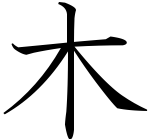Collections
Aside from its sequential data types, Ki provides a small number of collections.
Hash Table
Ki's associative array is called table, and is implemented as a hash table.
fn main() {
var names_to_players1: table(
key_type: <*str>
value_type: <*Player!>
alloc: 5
values: [
*"Player 1": *Player("Player 1", 10)!
*"Player 2": *Player("Player 2", 10)!
]
ordered: false
)
var names_to_players2: table([
"Player 1": Player("Player 1", 10)
"Player 2": Player("Player 2", 10)
ordered: true
])
}
Set
Ki also provides a set collection. Its implementation is similar to that of
table, but the interface provides methods for working with sets.
fn main() {
val basket1: set(["apple", "banana", "cherry"])
val basket2: set(["blueberry", "blackberry", "banana"])
val common: basket1.intersection_of(basket_2)
for fruit in common {
echo("${fruit} is in both baskets")
}
}
A set may be also be ordered.
